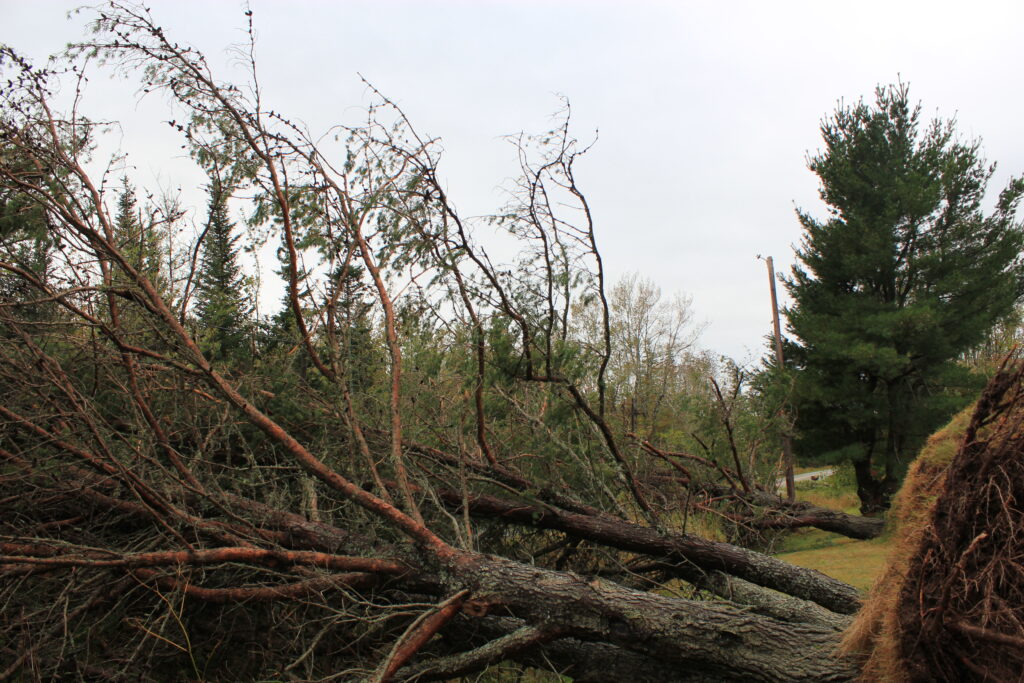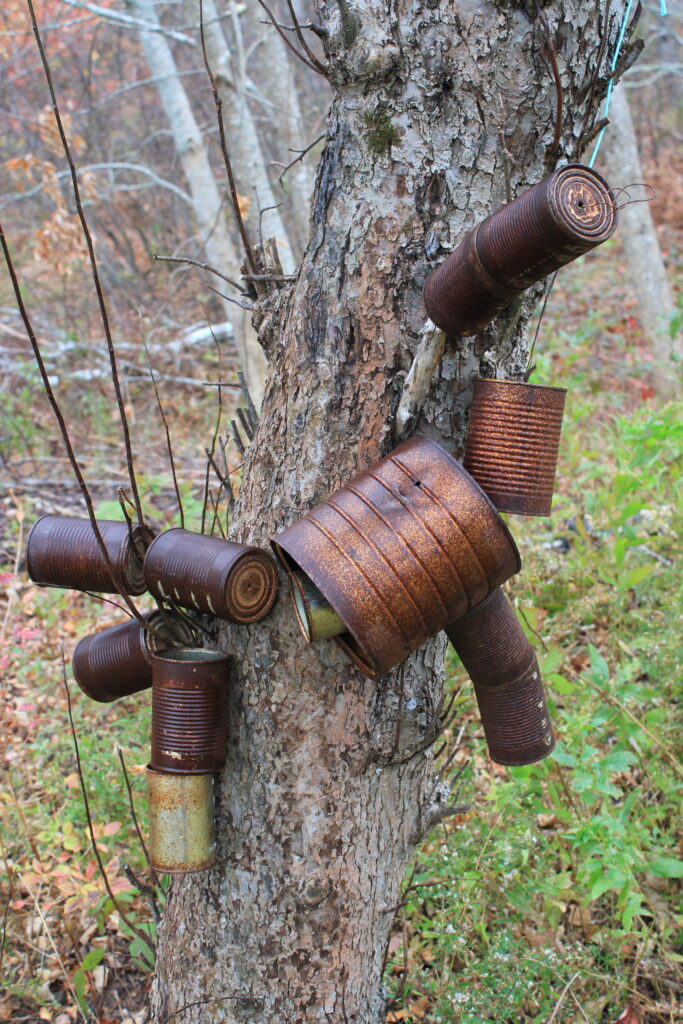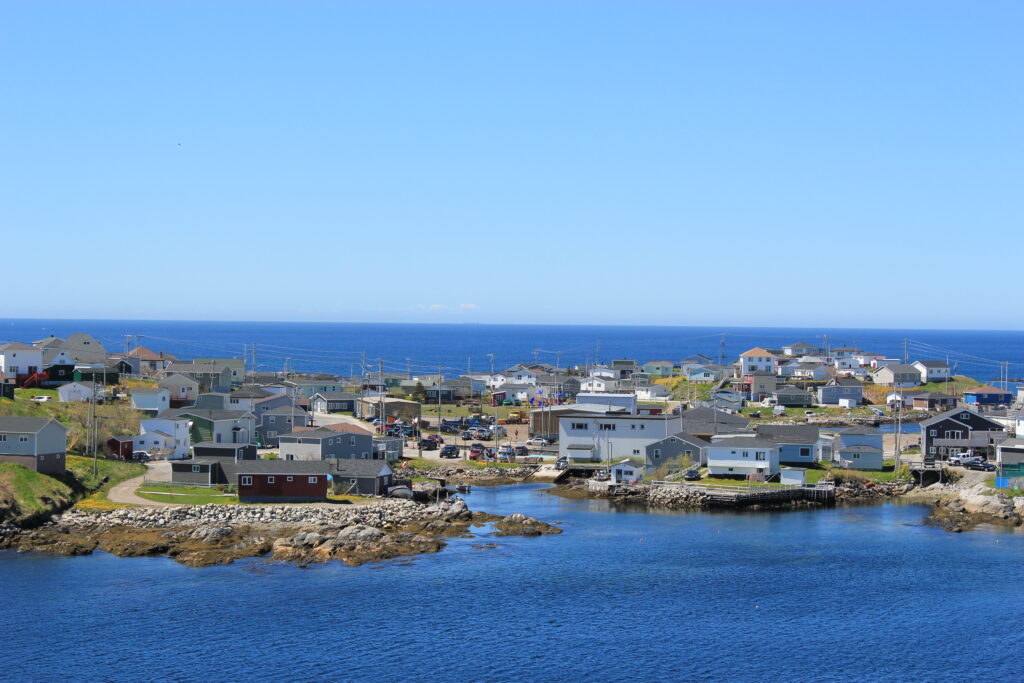
I promised to write about hurricane Fiona. The best thing I can say is that it could have been worse. Wind took shingles from our barn roof, and rain ran through into the machinery on the main floor below. Two giant maples landed on the old camper that we use only for storage – knocking it over and breaking the spare windows and other items inside. We are scared to investigate too closely until we remove the trees, and there are other, more urgent tasks.
Another maple broke into a kazillion big logs, crushing my fancy new clothesline with its steel poles – but it missed the house. We lost five good apple trees and one cherry tree. A falling cedar broke part of our fence and the wind took out the gate and another section. One corner of the porch roof lifted, but the rest of the house remained intact – though speckled with a confetti of crumbled leaves and twigs. In all, we lost 38 trees from our “house lot,” and about a third of the trees in our woodlot – though the trails are blocked with swathes of downed trees and it’s a hard old slog to get through the woods to have a good look. In two days of examination, my husband and I covered barely 20 acres.
We lost power, of course – but we have a generator – and electricity was restored in a week. That was a miracle. We’ve been in the dark longer in lesser storms. Our telephone is Voice Over Internet Protocol (VOIP) and our internet is via satellite – so as long as we had power, we had phone and internet.
We lost a whole night of sleep as our house trembled and the sky roared, interrupted every now and again by a hollow thump – the sound of a big tree falling, we discovered.
We lost our efforts at restoring the damage caused by Hurricane Dorian three years ago. We lost some food from the fridge and freezer, and time and money spent on repairs, chainsaw fuel, materials, and so on – much of which is not covered by insurance.
We lost heart – for a while.
But that is all we lost. We are alive, and uninjured. We still have a roof over our heads. We have family, good friends, and neighbours who all pitched in to help clear driveways, open the road before the provincial Transportation Department could even get near it, chunk up logs, and pile debris ready for the chippers. We already had the tools and know-how to deal with much of the damage – once we get past the stage of being overwhelmed.

Once we could, we disaster-toured around the area: miles of power and communication lines down; massive trees blocking streets and highways; cottages swept into the sea or exploded by the wind; roofs peeled back; pavement buckled and undermined; livestock and hay barns completely collapsed, and hectares and hectares of trees (years of crop) flattened as if they were blades of grass trampled by giant feet.
Yes, it was – and still is – bad enough – but I count my many blessings.
I will be passing through Channel-Port-aux-Basques in a few days, a bit fearful of what I may see in one of my favorite places in Newfoundland and Labrador. Even weeks after Hurricane Fiona, I expect to be moved by the devastation and realize, once again, how much worse it could have been here at home.
So there. Take that, Fiona. I see your hurricane and I raise you unending community, courage and resilience.


Well said and all I can say is Ditto